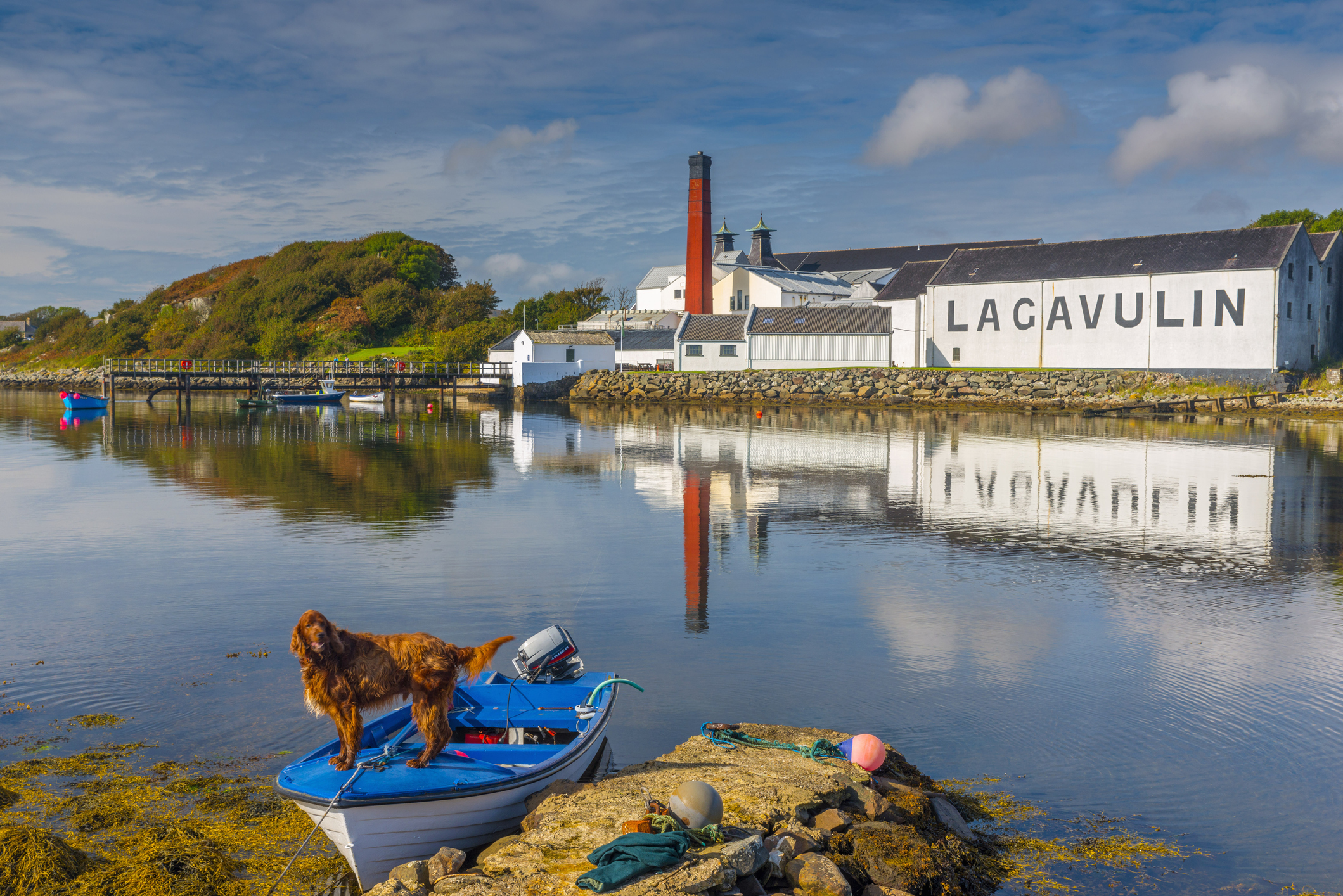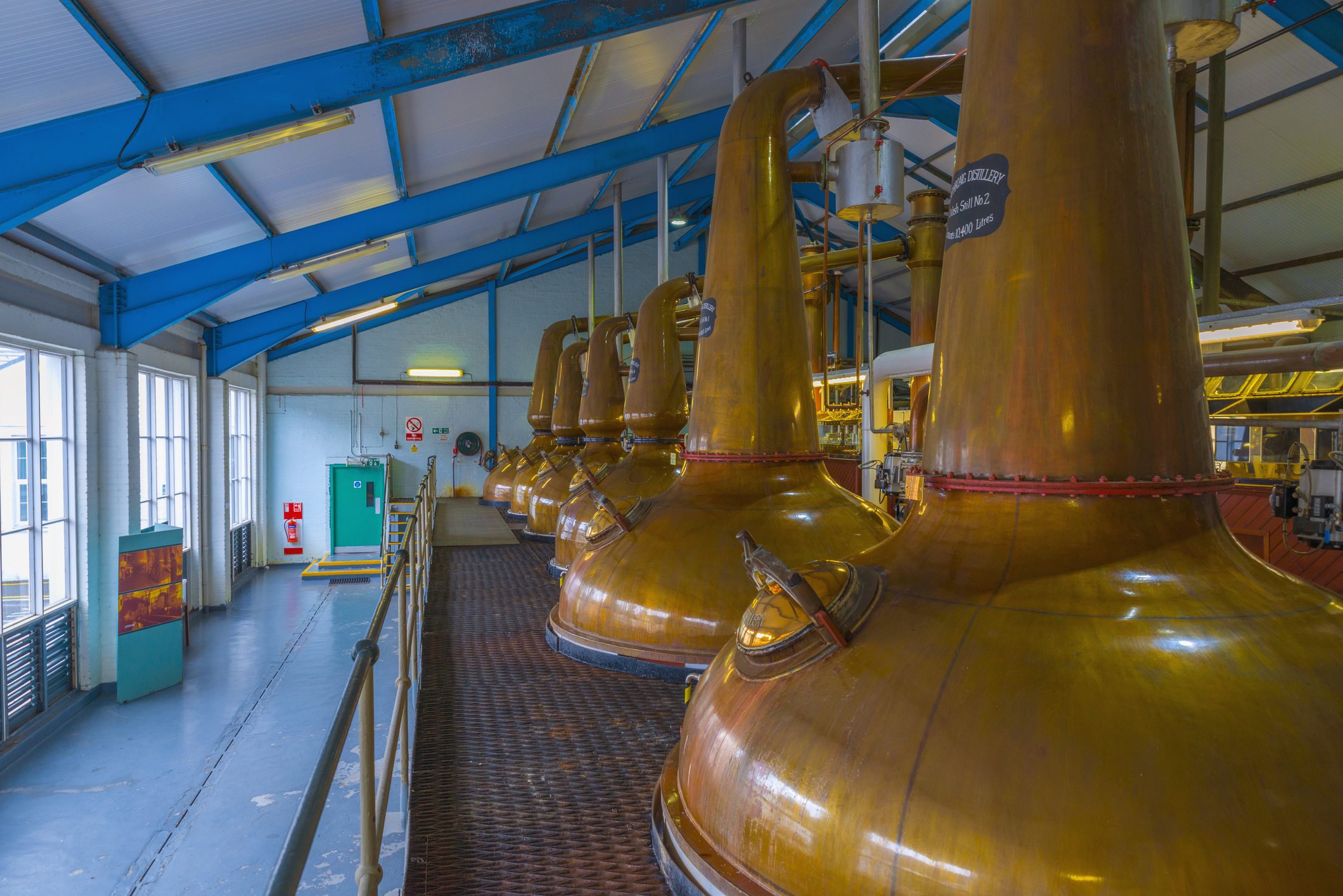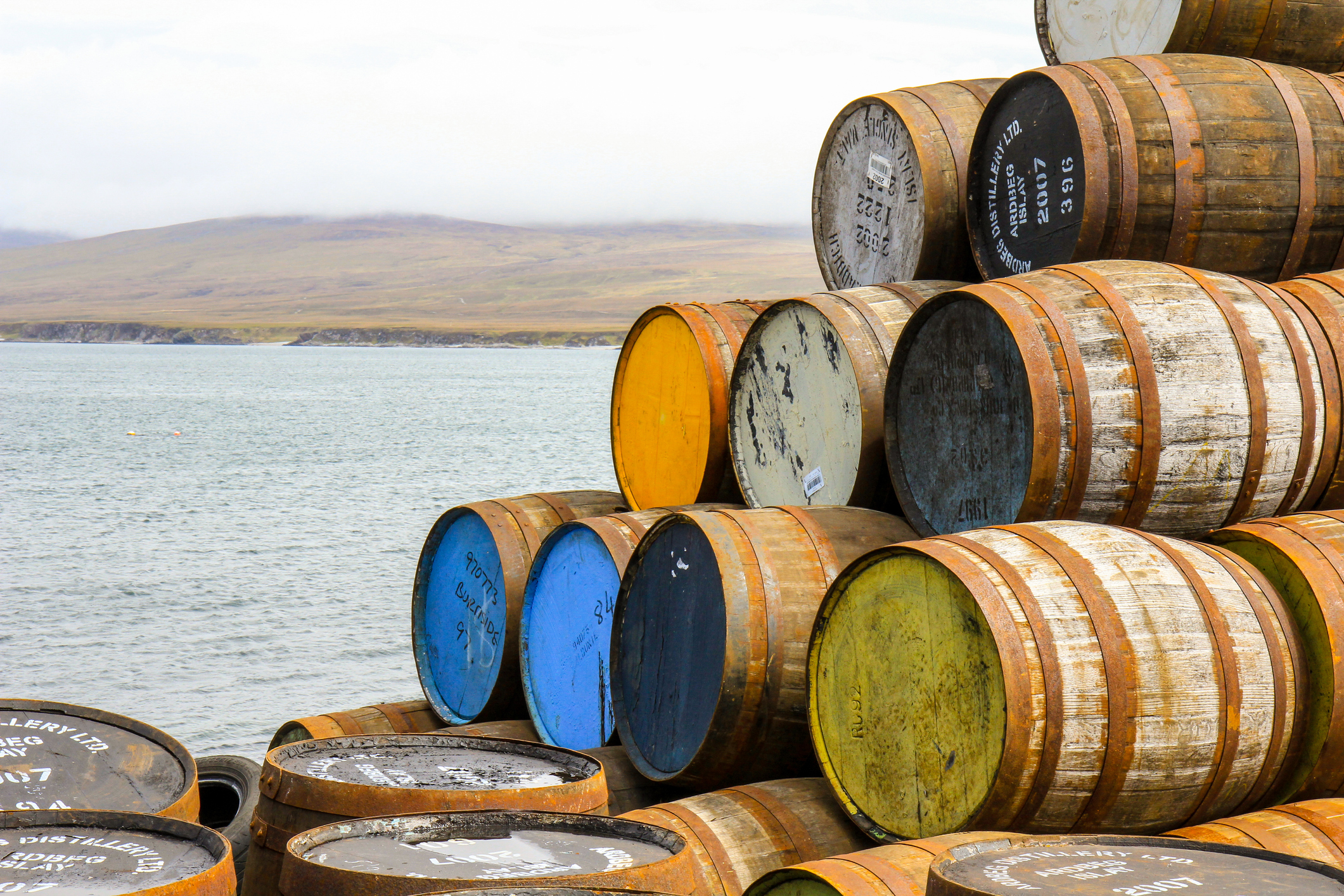Photo: Johnce (Getty Images)
There’s no better time to get to know peated Scotch whisky than winter. That’s because, for many of us, this season tends to be devoid of sunlight, rather chilly, and fairly bleak. These are the best conditions for whisky-drinking of all kind, but they are especially good for smoky whisky.
In order to fully enjoy this season, you need to learn about one of Scotland’s truly delicious Scotch whisky styles: the smoky, peated whisky made by the likes of Ardbeg, Laphroaig, and Bruichladdich (among others).
So put on your favorite sweats, find a seat, grab a blanket, and pour yourself a dram because you’re about to learn all about peated Scotch whisky.
Because you need more than Scotch whisky: Here’s Everything You Need To Stock Your Home Bar
Trailblazing distillers: Get To Know The Distillery That Pioneered ‘Texas Made’ Whiskey
Follow Mandatory on Facebook, Twitter, and Instagram.
Peated Scotch Whisky
-
Islay is where the magic happens.

Islay is a breathtaking, rugged island off the West Coast of Scotland. “Also known as ‘The Queen of the Hebrides,’ the island is home to amazing wildlife, remarkable community spirit and it's one of the world's foremost places for delicious whisky,” says Simon Brooking, master brand ambassador for Laphroaig.
“Located along the northeastern edge of the Gulf Stream, the island boasts fairly mild temperatures year-round at 52°F. However, Islay is also known to have ferocious wind storms, particularly in the winter.”
You can drive around the whole island in about an hour. (It’s roughly 30 miles by 30 miles.) “It’s most famous for being covered in peat bogs which are burned in kilns and to make the smoky malted barley used in many of the distilleries on Islay,” says Brendan McCarron, head of maturing whisky stocks for The Glenmorangie Company.
The island has the has the highest concentration of distilleries per capita in the world with 10 distilleries currently on an island of 3,200 people. “There are eight working distilleries and the maltings on Islay so it truly is a special place, really magical,” says McCarron.
Photo: Alan Copson (Getty Images)
-
These elements make a great peated whisky.

Islay has always been a difficult place to get to. “Because of this, historically speaking, it was often quite behind the mainland in receiving modern amenities,” says Jason Cousins, Bruichladdich's senior brand ambassador for the Americas.
When Scottish distillers started using electricity to heat the hearth, homes, and stills, much of Islay was still burning peat. “While Islay now has all the modern trappings shared by the rest of Scotland, it has come to be known as the land of peaty whisky,” says Cousins.
Historically, in the 18th and 19th Centuries, the proximity to the mainland made Islay the perfect location for whisky-makers to produce their spirit in peace. It was far from the prying eyes of the “tax man” but close enough to be able to sell it at market in Glasgow.
“Islay delivers the in-depth flavor of peat,” says Brookings. “This is because its peat bogs are unlike those of mainland Scotland. Having never really had expansive forests or thickets, the peat moss is responsible for Islay whisky’s medicinal taste.”
Photo: Alan Copson (Getty Images)
-
Why is peated whisky made on Islay?

It’s a matter of necessity. “There are not a lot of trees on Islay, and peat acts as a fuel source for the islanders,” says Brookings. Islay is particularly famous for its peated single malt whiskies because the peat on the island is different than the peat on the mainland due to geology.
“Of course, depending on location, no peat bog on Islay is exactly the same either.”
Photo: Alan Copson (Getty Images)
-
The peated whisky process takes time.

The malting of barley involves soaking the barely in water for a day (steeping) then germinating the barley in germination drums for four days. “Then when the barley is ready, it needs to dry it in a kiln,” says McCarron.
The kilning process takes 24 hours. “For the first 12 hours not only is warm air circulation through the kiln, we also burn peat to introduce the smoky flavor,” he says. “All the while we make sure that there aren’t any red or orange flames, but a constant, thick blanket of white smoke.”
Photo: Matt Gibson (Getty Images)
-
The history of peated whisky is long.

The earliest historic record of coal mining in Scotland was in the 13th Century. “At that time, people commonly preferred to use wood and peat to heat their homes because of the disagreeable black smoke and lack of availability of coal,” says Brookings.
Several distilleries across Scotland have kept the tradition of using varying proportions of peat during the kilning process. “At first it was because of necessity, however, now many distilleries add their own unique style to the peat tradition for flavor,” he says.
Being compressed local vegetation, peat will produce different flavored smoke depending on the region. “For example, peat from the Highlands is more decomposed pine trees whereas peat from the islands is more decomposed seaweed.” It’s like the difference between sitting around a campfire in the forest versus sitting around a bonfire on the beach.
Photo: Education Images (Getty Images)
-
Peating brings out unique flavors.

Peating brings out wonderful smoky flavors of campfire and tobacco, earth, brine, hickory, mesquite, iodine, and more. “Peat gets an unfair reputation for having an inaccessible and almost medicinal flavor profile but the flavors are influenced not only by the distiller’s distinct peating process, but also by choices made in things like the shape of the stills, the temperature of distillation, the cuts made in the run, time in casks and type of wood, even the ‘terroir’ of the peat – where geographically it is cut from the ground and what was previously growing there,” says Cousins. “All of these elements will influence the flavors of peaty whisky.”
Photo: Education Images (Getty Images)







